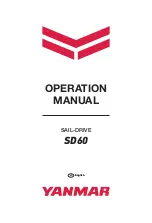
xii
Caution
Cautions indicate potential damage to equipment, software, or data.
Data Field Size
The term INTnn, where nn is one of 2, 4, 8, 16, 32, or 64, refers to a data field of
nn contiguous NATURALLY ALIGNED bytes. For example, INT4 refers to a
NATURALLY ALIGNED longword.
Data Units
The following data-unit terminology is used throughout this manual.
Note
Notes emphasize particularly important information.
Numbering
All numbers are decimal or hexadecimal unless otherwise indicated. The prefix 0x
indicates a hexadecimal number. For example, 19 is decimal, but 0x19 and 0x19A
are hexadecimal (also see Addresses). Otherwise, the base is indicated by a sub-
script; for example, 100
2
is a binary number.
Ranges and Extents
Ranges are specified by a pair of numbers separated by two periods (..) and are inclu-
sive. For example, a range of integers 0..4 includes the integers 0, 1, 2, 3, and 4.
Extents are specified by a pair of numbers in angle brackets (< >) separated by a
colon (:) and are inclusive. Bit fields are often specified as extents. For example, bits
<7:3> specifies bits 7, 6, 5, 4, and 3.
Register and Memory Figures
Register figures have bit and field position numbering starting at the right (low order)
and increasing to the left (high order).
Term Words
Bytes
Bits
Other
Byte
½
1
8
—
Word
1
2
16
—
Longword/Dword
2
4
32
Longword
Quadword
4
8
64
2 Longwords
Octaword
8
16
128
2 Quadwords
Hexword
16
32
256
2 Octawords












































